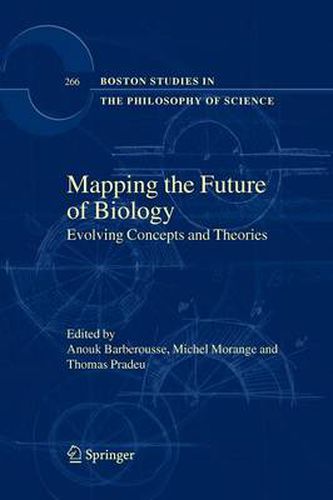Readings Newsletter
Become a Readings Member to make your shopping experience even easier.
Sign in or sign up for free!
You’re not far away from qualifying for FREE standard shipping within Australia
You’ve qualified for FREE standard shipping within Australia
The cart is loading…






This title is printed to order. This book may have been self-published. If so, we cannot guarantee the quality of the content. In the main most books will have gone through the editing process however some may not. We therefore suggest that you be aware of this before ordering this book. If in doubt check either the author or publisher’s details as we are unable to accept any returns unless they are faulty. Please contact us if you have any questions.
Carving Nature at its Joints? In order to map the future of biology we need to understand where we are and how we got there. Present day biology is the realization of the famous metaphor of the organism as a bete machine elaborated by Descartes in Part V of the Discours,a realization far beyond what anyone in the seventeenth century could have im- ined. Until the middle of the nineteenth century that machine was an articulated collection of macroscopic parts, a system of gears and levers moving gasses, solids, and liquids, and causing some parts of the machine to move in response to the force produced by others. Then, in the nineteenth century, two divergent changes occurred in the level at which the living machine came to be investigated. First, with the rise of chemistry and the particulate view of the composition of matter, the forces on macroscopic machine came to be understood as the ma- festation of molecular events, and functional biology became a study of molecular interactions. That is, the machine ceased to be a clock or a water pump and became an articulated network of chemical reactions. Until the ?rst third of the twentieth century this chemical view of life, as re?ected in the development of classical b- chemistry treated the chemistry of biological molecules in much the same way as for any organic chemical reaction, with reaction rates and side products that were the consequence of statistical properties of the concentrations of reactants.
$9.00 standard shipping within Australia
FREE standard shipping within Australia for orders over $100.00
Express & International shipping calculated at checkout
This title is printed to order. This book may have been self-published. If so, we cannot guarantee the quality of the content. In the main most books will have gone through the editing process however some may not. We therefore suggest that you be aware of this before ordering this book. If in doubt check either the author or publisher’s details as we are unable to accept any returns unless they are faulty. Please contact us if you have any questions.
Carving Nature at its Joints? In order to map the future of biology we need to understand where we are and how we got there. Present day biology is the realization of the famous metaphor of the organism as a bete machine elaborated by Descartes in Part V of the Discours,a realization far beyond what anyone in the seventeenth century could have im- ined. Until the middle of the nineteenth century that machine was an articulated collection of macroscopic parts, a system of gears and levers moving gasses, solids, and liquids, and causing some parts of the machine to move in response to the force produced by others. Then, in the nineteenth century, two divergent changes occurred in the level at which the living machine came to be investigated. First, with the rise of chemistry and the particulate view of the composition of matter, the forces on macroscopic machine came to be understood as the ma- festation of molecular events, and functional biology became a study of molecular interactions. That is, the machine ceased to be a clock or a water pump and became an articulated network of chemical reactions. Until the ?rst third of the twentieth century this chemical view of life, as re?ected in the development of classical b- chemistry treated the chemistry of biological molecules in much the same way as for any organic chemical reaction, with reaction rates and side products that were the consequence of statistical properties of the concentrations of reactants.